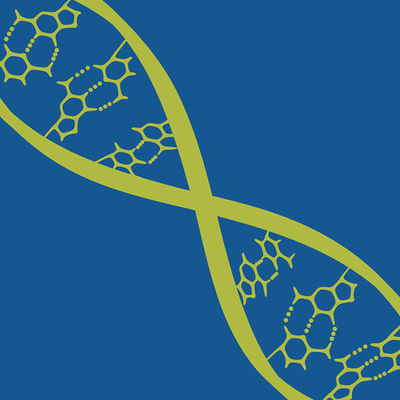预约演示
更新于:2025-12-09

Arcus Biosciences, Inc.
更新于:2025-12-09
概览
标签
肿瘤
消化系统疾病
呼吸系统疾病
单克隆抗体
小分子化药
化学药
疾病领域得分
一眼洞穿机构专注的疾病领域
暂无数据
技术平台
公司药物应用最多的技术
暂无数据
靶点
公司最常开发的靶点
暂无数据
| 排名前五的药物类型 | 数量 |
|---|---|
| 小分子化药 | 16 |
| 单克隆抗体 | 7 |
| 化学药 | 2 |
关联
25
项与 Arcus Biosciences, Inc. 相关的药物靶点 |
作用机制 PD-1抑制剂 |
原研机构 |
在研适应症 |
最高研发阶段批准上市 |
首次获批国家/地区 中国 |
首次获批日期2021-08-25 |
靶点 |
作用机制 PDL1抑制剂 |
原研机构 |
在研适应症 |
最高研发阶段批准上市 |
首次获批国家/地区 美国 |
首次获批日期2016-05-18 |
靶点 |
作用机制 HIF-2α抑制剂 |
在研适应症 |
非在研适应症- |
最高研发阶段临床3期 |
首次获批国家/地区- |
首次获批日期- |
53
项与 Arcus Biosciences, Inc. 相关的临床试验NCT07011719
A Randomized, Double-Blind, Active-Control, Multicenter Phase 3 Trial of Casdatifan and Cabozantinib Versus Placebo and Cabozantinib in Patients With Advanced Clear Cell Renal Cell Carcinoma
The purpose of the study is to evaluate the progression-free survival (PFS) of casdatifan versus placebo when each is given in combination with cabozantinib in adult patients with confirmed advanced or metastatic clear cell Renal Cell Carcinoma who have experienced progression on or after prior anti-PD-1 or anti-PD-L1 immunotherapy.
开始日期2025-09-08 |
申办/合作机构 |
NCT07000149
A Phase Ib/III Randomized, Multicenter, Global Study of Volrustomig Plus Casdatifan or Volrustomig Monotherapy Versus Nivolumab Plus Ipilimumab as First-line Treatment for Participants With Advanced Clear Cell Renal Cell Carcinoma (ccRCC)
This is a Phase Ib/III, randomized, multicenter, global study evaluating the efficacy and safety of volrustomig in combination with casdatifan for the first-line (1L) treatment of participants with advanced clear cell renal cell carcinoma (ccRCC).
开始日期2025-07-28 |
申办/合作机构  AstraZeneca PLC AstraZeneca PLC [+1] |
NCT06919991
A Phase 1, Open-Label, Fixed-Sequence, Drug-Drug Interaction Study of Casdatifan With Itraconazole (Strong CYP3A4 Inhibitor) and Phenytoin (Strong CYP3A4 Inducer) in Healthy Adult Participants
The purpose of the study is to assess the effects of multiple doses of itraconazole (a strong CYP3A4 inhibitor) on single dose PK of casdatifan in healthy adults and to assess the effects of multiple doses of phenytoin (a strong CYP3A4 inducer) on single dose PK of casdatifan in healthy adults.
开始日期2025-05-02 |
申办/合作机构 |
100 项与 Arcus Biosciences, Inc. 相关的临床结果
登录后查看更多信息
0 项与 Arcus Biosciences, Inc. 相关的专利(医药)
登录后查看更多信息
12
项与 Arcus Biosciences, Inc. 相关的文献(医药)2025-06-12·JOURNAL OF MEDICINAL CHEMISTRY
Discovery of AB801, a Potent and Selective Inhibitor of AXL Receptor Tyrosine Kinase for Use in Cancer Therapy
Article
作者: Zhao, Xiaoning ; Thomas, Joice ; Ginn, Elaine ; Sharif, Ehesan U. ; Beatty, Joel W. ; Green, David ; Adeojo, Lilian ; Shaqfeh, Stefan G. ; Lamani, Manjunath ; Fernández-Salas, Ester ; Powers, Jay P. ; Chen, Ada ; Paladugu, Srinivas Reddy ; Nareddy, Pradeep ; Qu, Shiwei ; Huang, Hsin-Ting ; Zhou, Lian ; Grange, Rebecca ; Paprcka, Susan L. ; Foley, Corinne N. ; Johnson, Jordon ; Singh, Hema ; Miles, Dillon H. ; Lee, Yue Tong ; Gal, Balint ; Zhao, Guiling ; Jin, Lixia ; Leleti, Manmohan R.
AXL receptor tyrosine kinase (AXL), a transmembrane protein highly expressed in a variety of cancers, has been implicated in the development of resistance to various forms of therapy and poor patient outcomes. Although several strategies have been postulated to limit AXL signaling and thus tumor growth, further refinement is possible. In this Drug Annotation, we report the structure-based design, SAR-driven optimization, preclinical pharmacokinetics (PK), and synthetic chemistry which enabled the discovery of AB801. AB801 is a novel, highly potent, selective, and orally bioavailable AXL inhibitor. In addition to its characterization in a variety of in vitro assays and in vivo studies, AB801 was recently dosed in healthy volunteers and is currently being evaluated clinically as a single agent in advanced solid tumors and in combination with chemotherapy for the treatment of nonsmall cell lung cancer (NSCLC).
2025-06-12·JOURNAL OF MEDICINAL CHEMISTRY
Discovery and Characterization of Potent, Selective, and Orally Bioavailable 7-Azaindazole AXL Receptor Tyrosine Kinase Inhibitors
Article
作者: Sharif, Ehesan U. ; Thomas, Joice ; Qu, Shiwei ; Jin, Lixia ; Nareddy, Pradeep ; Zhao, Xiaoning ; Zhao, Guiling ; Paprcka, Susan L. ; Chen, Yu ; Lamani, Manjunath ; Foley, Corinne N. ; Miles, Dillon H. ; Huang, Hsin-Ting ; Powers, Jay P. ; Grange, Rebecca ; Paladugu, Srinivas Reddy ; Leleti, Manmohan R. ; Fernandez-Salas, Ester ; Green, David
High expression of the membrane-bound receptor tyrosine kinase AXL is linked to poor patient outcomes and therapeutic resistance in a variety of cancers. Selective inhibition of AXL is a promising approach to overcome mechanisms of resistance to standard of care therapies, but it is unclear if reported inhibitors have achieved an appropriate therapeutic window to effectively block AXL signaling in tumors. Herein, we report the initial design and structure-activity relationship (SAR)-driven optimization of a novel series of 7-azaindazole AXL inhibitors. These efforts identified a suitable tool compound for in vivo studies that demonstrated a significant reduction in tumor volume in combination with standard-of-care therapies. Further optimization culminated in the discovery of lead compound 68, a molecule with favorable potency, kinome selectivity, oral bioavailability, and safety. SAR insights gained from this campaign helped guide subsequent optimization efforts that ultimately led to the identification of clinical development candidate AB801.
2025-02-21·ORGANIC PROCESS RESEARCH & DEVELOPMENT
Development of a Scalable Synthesis of Casdatifan (AB521), a Potent, Selective, Clinical-Stage Inhibitor of HIF-2α
作者: Mata, Guillaume ; Fournier, Jeremy ; Hardman, Clayton ; Kalisiak, Jaroslaw ; Beatty, Joel W. ; Mailyan, Artur K. ; Drew, Samuel L. ; Lawson, Kenneth V. ; Yu, Kai ; Wang, Zhang ; Gal, Balint ; Epplin, Matthew ; Tran, Anh ; Leleti, Manmohan R. ; Haelsig, Karl ; Powers, Jay P. ; Rosen, Brandon R.
Casdatifan (AB521) is a potent and selective inhibitor of HIF-2α, currently under clin. evaluation for the treatment of clear cell renal cell carcinoma (ccRCC).Here, we report the development of a scalable synthesis of casdatifan, which was used to support its preclin. characterization and the initiation of phase 1 clin. studies.A convergent approach to assembling the tetracyclic scaffold and the development of efficient routes to key intermediates enabled the successful delivery of material to meet clin. development timelines.Crucial to the efficiency of the synthesis was the strategic design of synthetic routes that leverage a combination of substrate and catalyst control to set each of the 5 stereocenters found in the mol. with exquisite selectivity.
449
项与 Arcus Biosciences, Inc. 相关的新闻(医药)2025-11-29
美国银行将 Arcus Biosciences 的目标价格从 17.00 美元上调至 26.00 美元,表示潜在上涨幅度为 0.68%。该股票的共识评级为 “适度买入”,目标价格为 29.44 美元。近期注意到内部人士的销售和对冲基金活动,内部人士持有该股票的 9.60%Arcus Biosciences(纽约证券交易所代码:RCUS - 获取免费报告)在一份周五发布给客户和投资者的研究报告中,银行美林的股票研究人员将其目标价从 17.00 美元上调至 26.00 美元,Benzinga 报道。该券商目前对该股票给予 “中性” 评级。银行美林的目标价意味着该股票相较于之前收盘价有 0.68% 的潜在上涨空间。
从落后者到领军者:小型股正在崛起
其他研究分析师最近也对该股票发布了研究报告。Weiss Ratings 在 10 月 8 日的报告中重申了对 Arcus Biosciences 股票的 “卖出(d-)” 评级。HC Wainwright 在 10 月 29 日的研究报告中将 Arcus Biosciences 的目标价从 24.00 美元上调至 28.00 美元,并给予该公司 “买入” 评级。高盛集团在 10 月 30 日的研究报告中将 Arcus Biosciences 的目标价从 14.00 美元上调至 16.00 美元,并给予该公司 “中性” 评级。Truist Financial 在 10 月 7 日的报告中重新发布了 “买入” 评级,并将 Arcus Biosciences 的目标价从 32.00 美元上调至 39.00 美元。最后,富国银行在 10 月 20 日的报告中将 Arcus Biosciences 的目标价从 25.00 美元上调至 29.00 美元,并给予该股票 “超配” 评级。七位投资分析师对该股票给予了买入评级,两位给予了持有评级,一位给予了卖出评级。根据 MarketBeat 的数据,Arcus Biosciences 的共识评级为 “适度买入”,共识目标价为 29.44 美元。
获取 Arcus Biosciences 的提醒:
获取我们对 RCUS 的最新分析
Arcus Biosciences 股票表现
MarketBeat 周回顾 – 7/10 - 7/14
在周五的交易中,纽约证券交易所 RCUS 的股票上涨了 0.27 美元,达到了 25.83 美元。该股票的交易量为 362,857 股,而其平均交易量为 1,121,739 股。该公司的债务与股本比率为 0.22,流动比率为 3.65,速动比率为 3.65。该股票的市值为 27.9 亿美元,市盈率为-7.50,贝塔值为 0.90。Arcus Biosciences 的 52 周低点为 6.50 美元,52 周高点为 26.32 美元。该公司的 50 日移动平均线为 17.67 美元,200 日移动平均线为 12.43 美元。
Arcus Biosciences(纽约证券交易所代码:RCUS - 获取免费报告)最近在 10 月 28 日发布了季度财报。该公司报告本季度每股收益为(1.27 美元),超出市场共识预期的(1.33 美元)0.06 美元。该业务本季度的收入为 2600 万美元,而市场共识预期为 1989 万美元。Arcus Biosciences 的净利润率为-136.40%,股本回报率为-68.17%。与去年同期相比,该公司的收入下降了 45.8%。在去年同期,该公司每股收益为(1.00 美元)。分析师预测 Arcus Biosciences 在本财年的每股收益将为-3.15 美元。
内部活动
吉利德通过投资 AlloVir 和 Arcus 扩大生物技术足迹
在其他新闻中,首席财务官 Robert C. Goeltz II 在 10 月 28 日的交易中出售了 5000 股 Arcus Biosciences 的股票。股票以平均价格 20.00 美元出售,总交易额为 100,000.00 美元。交易完成后,首席财务官直接持有该公司 92,138 股股票,价值约为 1,842,760 美元。此交易代表其持股比例减少了 5.15%。该交易已在向证券交易委员会提交的文件中披露,相关文件可通过 SEC 网站访问。此外,首席会计官 Alexander Azoy 在 9 月 29 日的交易中出售了 2831 股该公司的股票。股票以平均价格 13.00 美元出售,总价值为 36,803.00 美元。交易完成后,首席会计官直接持有该公司 27,363 股股票,价值约为 355,719 美元。此交易代表其持股比例减少了 9.38%。该销售的披露信息可在 SEC 文件中找到。在过去 90 天内,内部人士共出售了 210,875 股公司股票,价值 4,017,263 美元。当前 9.60% 的股票由公司内部人士持有。
对 Arcus Biosciences 的对冲基金看法
对冲基金和其他机构投资者最近增加或减少了对该公司的持股。GAMMA Investing LLC 在第三季度将其在 Arcus Biosciences 的持股增加了 59.1%。GAMMA Investing LLC 现在拥有该公司 2,748 股股票,价值 37,000 美元,此前在该期间内又购买了 1,021 股。SBI Securities Co. Ltd.在第三季度将其在 Arcus Biosciences 的持股增加了 13,547.6%。SBI Securities Co. Ltd.现在拥有该公司 2,866 股股票,价值 39,000 美元,此前在上个季度又购买了 2,845 股。CWM LLC 在第二季度将其在 Arcus Biosciences 的持股增加了 233.6%。CWM LLC 现在拥有该公司 5,441 股股票,价值 44,000 美元,此前在该期间内又购买了 3,810 股。Ameritas Investment Partners Inc.在第二季度将其在 Arcus Biosciences 的持股增加了 34.3%。Ameritas Investment Partners Inc.现在拥有该公司 7,038 股股票,价值 57,000 美元,此前在上个季度又购买了 1,796 股。最后,PNC Financial Services Group Inc.在第二季度将其在 Arcus Biosciences 的持股增加了 440.3%。PNC Financial Services Group Inc.现在拥有该公司 7,597 股股票,价值 62,000 美元,此前在上个季度又购买了 6,191 股。92.89% 的股票由机构投资者持有。
关于 Arcus Biosciences
(获取免费报告)
Arcus Biosciences, Inc.是一家临床阶段的生物制药公司,专注于在美国开发和商业化癌症疗法。该公司的产品管线包括 Domvanalimab,一种抗 TIGIT 抗体,目前正在进行第二期和第三期临床试验;以及 AB308,一种正在研究的抗 TIGIT 单克隆抗体,目前处于 1b 期临床试验,旨在研究晚期实体瘤和血液恶性肿瘤患者。
另见
五只我们认为比 Arcus Biosciences 更好的股票
如何寻找被低估的股票
加仓 Fiserv 的两个理由,远离它的一个理由
技术股解析:关于科技你需要知道的
购买三只股票以迎接 AI 基础设施的演变
恒生指数是什么?
Semtech 的数据中心芯片如何推动 AI 热潮
此即时新闻提醒由叙事科学技术和 MarketBeat 的金融数据生成,旨在为读者提供最快的报道和公正的覆盖。请将任何问题或意见发送至 contact@marketbeat.com。
你现在应该投资$1,000 在 Arcus Biosciences 吗?
在考虑 Arcus Biosciences 之前,你需要听听这个。
MarketBeat 每天跟踪华尔街顶级评级和表现最佳的研究分析师及其推荐给客户的股票。MarketBeat 已识别出五只顶级分析师悄悄建议客户现在购买的股票,以便在更广泛的市场注意到之前……而 Arcus Biosciences 并不在名单上。
尽管 Arcus Biosciences 目前在分析师中获得了中等买入评级,但顶级分析师认为这五只股票更值得购买。
在这里查看这五只股票
Arcus Biosciences(纽约证券交易所代码:RCUS - 获取免费报告)在一份周五发布给客户和投资者的研究报告中,银行美林的股票研究人员将其目标价从 17.00 美元上调至 26.00 美元,Benzinga 报道。该券商目前对该股票给予 “中性” 评级。银行美林的目标价意味着该股票相较于之前收盘价有 0.68% 的潜在上涨空间。
从落后者到领军者:小型股正在崛起
其他研究分析师最近也对该股票发布了研究报告。Weiss Ratings 在 10 月 8 日的报告中重申了对 Arcus Biosciences 股票的 “卖出(d-)” 评级。HC Wainwright 在 10 月 29 日的研究报告中将 Arcus Biosciences 的目标价从 24.00 美元上调至 28.00 美元,并给予该公司 “买入” 评级。高盛集团在 10 月 30 日的研究报告中将 Arcus Biosciences 的目标价从 14.00 美元上调至 16.00 美元,并给予该公司 “中性” 评级。Truist Financial 在 10 月 7 日的报告中重新发布了 “买入” 评级,并将 Arcus Biosciences 的目标价从 32.00 美元上调至 39.00 美元。最后,富国银行在 10 月 20 日的报告中将 Arcus Biosciences 的目标价从 25.00 美元上调至 29.00 美元,并给予该股票 “超配” 评级。七位投资分析师对该股票给予了买入评级,两位给予了持有评级,一位给予了卖出评级。根据 MarketBeat 的数据,Arcus Biosciences 的共识评级为 “适度买入”,共识目标价为 29.44 美元。
获取 Arcus Biosciences 的提醒:
获取我们对 RCUS 的最新分析
Arcus Biosciences 股票表现
MarketBeat 周回顾 – 7/10 - 7/14
在周五的交易中,纽约证券交易所 RCUS 的股票上涨了 0.27 美元,达到了 25.83 美元。该股票的交易量为 362,857 股,而其平均交易量为 1,121,739 股。该公司的债务与股本比率为 0.22,流动比率为 3.65,速动比率为 3.65。该股票的市值为 27.9 亿美元,市盈率为-7.50,贝塔值为 0.90。Arcus Biosciences 的 52 周低点为 6.50 美元,52 周高点为 26.32 美元。该公司的 50 日移动平均线为 17.67 美元,200 日移动平均线为 12.43 美元。
Arcus Biosciences(纽约证券交易所代码:RCUS - 获取免费报告)最近在 10 月 28 日发布了季度财报。该公司报告本季度每股收益为(1.27 美元),超出市场共识预期的(1.33 美元)0.06 美元。该业务本季度的收入为 2600 万美元,而市场共识预期为 1989 万美元。Arcus Biosciences 的净利润率为-136.40%,股本回报率为-68.17%。与去年同期相比,该公司的收入下降了 45.8%。在去年同期,该公司每股收益为(1.00 美元)。分析师预测 Arcus Biosciences 在本财年的每股收益将为-3.15 美元。
内部活动
吉利德通过投资 AlloVir 和 Arcus 扩大生物技术足迹
在其他新闻中,首席财务官 Robert C. Goeltz II 在 10 月 28 日的交易中出售了 5000 股 Arcus Biosciences 的股票。股票以平均价格 20.00 美元出售,总交易额为 100,000.00 美元。交易完成后,首席财务官直接持有该公司 92,138 股股票,价值约为 1,842,760 美元。此交易代表其持股比例减少了 5.15%。该交易已在向证券交易委员会提交的文件中披露,相关文件可通过 SEC 网站访问。此外,首席会计官 Alexander Azoy 在 9 月 29 日的交易中出售了 2831 股该公司的股票。股票以平均价格 13.00 美元出售,总价值为 36,803.00 美元。交易完成后,首席会计官直接持有该公司 27,363 股股票,价值约为 355,719 美元。此交易代表其持股比例减少了 9.38%。该销售的披露信息可在 SEC 文件中找到。在过去 90 天内,内部人士共出售了 210,875 股公司股票,价值 4,017,263 美元。当前 9.60% 的股票由公司内部人士持有。
对 Arcus Biosciences 的对冲基金看法
对冲基金和其他机构投资者最近增加或减少了对该公司的持股。GAMMA Investing LLC 在第三季度将其在 Arcus Biosciences 的持股增加了 59.1%。GAMMA Investing LLC 现在拥有该公司 2,748 股股票,价值 37,000 美元,此前在该期间内又购买了 1,021 股。SBI Securities Co. Ltd.在第三季度将其在 Arcus Biosciences 的持股增加了 13,547.6%。SBI Securities Co. Ltd.现在拥有该公司 2,866 股股票,价值 39,000 美元,此前在上个季度又购买了 2,845 股。CWM LLC 在第二季度将其在 Arcus Biosciences 的持股增加了 233.6%。CWM LLC 现在拥有该公司 5,441 股股票,价值 44,000 美元,此前在该期间内又购买了 3,810 股。Ameritas Investment Partners Inc.在第二季度将其在 Arcus Biosciences 的持股增加了 34.3%。Ameritas Investment Partners Inc.现在拥有该公司 7,038 股股票,价值 57,000 美元,此前在上个季度又购买了 1,796 股。最后,PNC Financial Services Group Inc.在第二季度将其在 Arcus Biosciences 的持股增加了 440.3%。PNC Financial Services Group Inc.现在拥有该公司 7,597 股股票,价值 62,000 美元,此前在上个季度又购买了 6,191 股。92.89% 的股票由机构投资者持有。
关于 Arcus Biosciences
(获取免费报告)
Arcus Biosciences, Inc.是一家临床阶段的生物制药公司,专注于在美国开发和商业化癌症疗法。该公司的产品管线包括 Domvanalimab,一种抗 TIGIT 抗体,目前正在进行第二期和第三期临床试验;以及 AB308,一种正在研究的抗 TIGIT 单克隆抗体,目前处于 1b 期临床试验,旨在研究晚期实体瘤和血液恶性肿瘤患者。
另见
五只我们认为比 Arcus Biosciences 更好的股票
如何寻找被低估的股票
加仓 Fiserv 的两个理由,远离它的一个理由
技术股解析:关于科技你需要知道的
购买三只股票以迎接 AI 基础设施的演变
恒生指数是什么?
Semtech 的数据中心芯片如何推动 AI 热潮
此即时新闻提醒由叙事科学技术和 MarketBeat 的金融数据生成,旨在为读者提供最快的报道和公正的覆盖。请将任何问题或意见发送至 contact@marketbeat.com。
你现在应该投资$1,000 在 Arcus Biosciences 吗?
在考虑 Arcus Biosciences 之前,你需要听听这个。
MarketBeat 每天跟踪华尔街顶级评级和表现最佳的研究分析师及其推荐给客户的股票。MarketBeat 已识别出五只顶级分析师悄悄建议客户现在购买的股票,以便在更广泛的市场注意到之前……而 Arcus Biosciences 并不在名单上。
尽管 Arcus Biosciences 目前在分析师中获得了中等买入评级,但顶级分析师认为这五只股票更值得购买。
在这里查看这五只股票
财报IPO微生物疗法
2025-11-22
Arcus Biosciences(纽约证券交易所代码:RCUS)达到了新的 52 周高点,交易价格为 22.44 美元,成交量为 883,816 股。分析师的评级意见不一:HC Wainwright 和 Truist Financial 给予 “买入” 评级,而 Weiss Ratings 则给予 “卖出” 评级。该公司报告的季度每股收益为(1.27 美元),超出预期。内部人士最近出售了 210,875 股,价值 4,017,263 美元。高盛和 Rhumbline Advisers 等机构投资者增加了他们的持股。Arcus Biosciences 的市值为 24.2 亿美元,净利润率为负 136.40%Arcus Biosciences, Inc.(纽约证券交易所代码:RCUS - 获取免费报告)在周五达到了新的 52 周高点。该公司的股价最高达到 22.44 美元,最后交易价格为 22.3790 美元,交易量为 883816 股。该股票之前的收盘价为 21.23 美元。
获取 Arcus Biosciences 的提醒:
分析师评级变动
从滞后者到领军者:小型股正在崛起
多位股票分析师对 RCUS 股票发表了看法。HC Wainwright 将 Arcus Biosciences 的目标股价从 24.00 美元上调至 28.00 美元,并在 10 月 29 日的研究报告中给予该股票 “买入” 评级。Weiss Ratings 在 10 月 8 日的研究报告中重申了对 Arcus Biosciences 的 “卖出(d-)” 评级。高盛集团在 10 月 30 日的研究报告中将 Arcus Biosciences 的目标股价从 14.00 美元上调至 16.00 美元,并给予该公司 “中性” 评级。Wedbush 在 10 月 29 日的研究报告中设定了 Arcus Biosciences 的目标股价为 35.00 美元,并给予该公司 “跑赢大盘” 评级。最后,Truist Financial 在 10 月 7 日的报告中重申了 “买入” 评级,并将 Arcus Biosciences 的目标股价设定为 39.00 美元(上调自 32.00 美元)。七位分析师给予该股票 “买入” 评级,两位给予 “持有” 评级,一位给予 “卖出” 评级。根据 MarketBeat.com 的数据,Arcus Biosciences 目前的共识评级为 “适度买入”,平均目标股价为 28.44 美元。
阅读我们关于 Arcus Biosciences 的最新报告
Arcus Biosciences 股价上涨 5.6%
MarketBeat 周回顾 – 7/10 - 7/14
该公司的流动比率为 3.65,速动比率为 3.65,债务股本比率为 0.22。该公司的市值为 24.2 亿美元,市盈率为-6.50,贝塔值为 0.90。该股票的 50 日简单移动平均线为 16.44 美元,200 日简单移动平均线为 11.88 美元。
Arcus Biosciences(纽约证券交易所代码:RCUS - 获取免费报告)在 10 月 28 日星期二发布了季度财报。该公司报告季度每股收益为(1.27 美元),超出市场共识预期的(1.33 美元)0.06 美元。Arcus Biosciences 的净利润率为-136.40%,股本回报率为-68.17%。该公司季度收入为 2600 万美元,而市场共识预期为 1989 万美元。在去年同期,该公司每股收益为(1.00 美元)。该公司的季度收入同比下降了 45.8%。整体来看,股票研究分析师预测 Arcus Biosciences, Inc.在本财年将发布-3.15 美元的每股收益。
内部活动
吉利德通过投资 AlloVir 和 Arcus 扩大生物科技足迹
在相关消息中,总裁 Juan C. Jaen 在 10 月 29 日星期三出售了 77840 股公司的股票。股票以平均价格 20.90 美元出售,总价值为 1626856.00 美元。出售完成后,总裁持有公司股票 1091374 股,价值约 22809716.60 美元。此次交易使其持股减少了 6.66%。该出售在与证券交易委员会的法律文件中披露,相关信息可通过此链接访问。此外,首席财务官 Robert C. Goeltz II 在 10 月 28 日星期二的交易中出售了 5000 股公司的股票。股票以平均价格 20.00 美元出售,总交易额为 100000.00 美元。交易完成后,首席财务官直接持有公司股票 92138 股,价值 1842760 美元。这代表其持股减少了 5.15%。该出售的 SEC 文件提供了更多信息。在过去的九十天里,内部人士出售了 210875 股公司股票,价值 4017263 美元。当前 9.60% 的股票由内部人士持有。
机构投资者对 Arcus Biosciences 的看法
几家机构投资者和对冲基金最近增加或减少了对 RCUS 的持股。高盛集团在第一季度将其在 Arcus Biosciences 的持股增加了 106.2%。高盛集团目前拥有 914208 股公司股票,价值 7177000 美元,此前在上个季度增持了 470755 股。Rhumbline Advisers 在第一季度将其在 Arcus Biosciences 的持股增加了 14.8%。Rhumbline Advisers 目前拥有 182909 股公司股票,价值 1436000 美元,此前在上个季度增持了 23645 股。Woodline Partners LP 在第一季度将其在 Arcus Biosciences 的持股增加了 45.5%。Woodline Partners LP 目前拥有 5127304 股公司股票,价值 40249000 美元,此前在上个季度增持了 1603367 股。Nordea Investment Management AB 在第二季度将其在 Arcus Biosciences 的持股增加了 17.1%。Nordea Investment Management AB 目前拥有 319899 股公司股票,价值 2633000 美元,此前在上个季度增持了 46776 股。最后,VIRGINIA RETIREMENT SYSTEMS ET Al 在第二季度购买了 Arcus Biosciences 的新头寸,价值约 295000 美元。机构投资者和对冲基金持有公司 92.89% 的股票。
Arcus Biosciences 公司简介
(获取免费报告)
Arcus Biosciences, Inc.是一家临床阶段的生物制药公司,专注于在美国开发和商业化癌症疗法。该公司的产品管线包括 Domvanalimab,一种抗 TIGIT 抗体,目前处于第二阶段和第三阶段临床试验;以及 AB308,一种正在研究的抗 TIGIT 单克隆抗体,目前处于第一阶段 b 临床试验,研究对象为晚期实体瘤和血液恶性肿瘤患者。
了解更多
我们更看好的五只股票,而不是 Arcus Biosciences
投资旅游股票的好处
Cloudflare 刚刚打破了互联网,但它仍然是一个炙手可热的买入机会
上海证券交易所综合指数是什么?
Anthropic 刚刚成为人工智能领域最热门的项目——得到了微软和 NVIDIA 的支持
如何找到被低估的股票
Affirm 刚刚超越了预期收益——但它能否超越 Klarna 的规模?
此即时新闻提醒由叙事科学技术和 MarketBeat 的金融数据生成,以便为读者提供最快的报道和公正的覆盖。请将有关此故事的任何问题或评论发送至 contact@marketbeat.com.
你现在应该投资 1,000 美元在 Arcus Biosciences 吗?
在考虑 Arcus Biosciences 之前,你需要听听这个。
MarketBeat 每天跟踪华尔街顶级评级和表现最佳的研究分析师及其推荐给客户的股票。MarketBeat 已经识别出五只顶级分析师悄悄向客户推荐的股票,建议在更广泛的市场注意到之前买入……而 Arcus Biosciences 并不在名单上。
虽然 Arcus Biosciences 目前在分析师中获得了中等买入评级,但顶级分析师认为这五只股票更值得购买。
在这里查看这五只股票
Arcus Biosciences, Inc.(纽约证券交易所代码:RCUS - 获取免费报告)在周五达到了新的 52 周高点。该公司的股价最高达到 22.44 美元,最后交易价格为 22.3790 美元,交易量为 883816 股。该股票之前的收盘价为 21.23 美元。
获取 Arcus Biosciences 的提醒:
分析师评级变动
从滞后者到领军者:小型股正在崛起
多位股票分析师对 RCUS 股票发表了看法。HC Wainwright 将 Arcus Biosciences 的目标股价从 24.00 美元上调至 28.00 美元,并在 10 月 29 日的研究报告中给予该股票 “买入” 评级。Weiss Ratings 在 10 月 8 日的研究报告中重申了对 Arcus Biosciences 的 “卖出(d-)” 评级。高盛集团在 10 月 30 日的研究报告中将 Arcus Biosciences 的目标股价从 14.00 美元上调至 16.00 美元,并给予该公司 “中性” 评级。Wedbush 在 10 月 29 日的研究报告中设定了 Arcus Biosciences 的目标股价为 35.00 美元,并给予该公司 “跑赢大盘” 评级。最后,Truist Financial 在 10 月 7 日的报告中重申了 “买入” 评级,并将 Arcus Biosciences 的目标股价设定为 39.00 美元(上调自 32.00 美元)。七位分析师给予该股票 “买入” 评级,两位给予 “持有” 评级,一位给予 “卖出” 评级。根据 MarketBeat.com 的数据,Arcus Biosciences 目前的共识评级为 “适度买入”,平均目标股价为 28.44 美元。
阅读我们关于 Arcus Biosciences 的最新报告
Arcus Biosciences 股价上涨 5.6%
MarketBeat 周回顾 – 7/10 - 7/14
该公司的流动比率为 3.65,速动比率为 3.65,债务股本比率为 0.22。该公司的市值为 24.2 亿美元,市盈率为-6.50,贝塔值为 0.90。该股票的 50 日简单移动平均线为 16.44 美元,200 日简单移动平均线为 11.88 美元。
Arcus Biosciences(纽约证券交易所代码:RCUS - 获取免费报告)在 10 月 28 日星期二发布了季度财报。该公司报告季度每股收益为(1.27 美元),超出市场共识预期的(1.33 美元)0.06 美元。Arcus Biosciences 的净利润率为-136.40%,股本回报率为-68.17%。该公司季度收入为 2600 万美元,而市场共识预期为 1989 万美元。在去年同期,该公司每股收益为(1.00 美元)。该公司的季度收入同比下降了 45.8%。整体来看,股票研究分析师预测 Arcus Biosciences, Inc.在本财年将发布-3.15 美元的每股收益。
内部活动
吉利德通过投资 AlloVir 和 Arcus 扩大生物科技足迹
在相关消息中,总裁 Juan C. Jaen 在 10 月 29 日星期三出售了 77840 股公司的股票。股票以平均价格 20.90 美元出售,总价值为 1626856.00 美元。出售完成后,总裁持有公司股票 1091374 股,价值约 22809716.60 美元。此次交易使其持股减少了 6.66%。该出售在与证券交易委员会的法律文件中披露,相关信息可通过此链接访问。此外,首席财务官 Robert C. Goeltz II 在 10 月 28 日星期二的交易中出售了 5000 股公司的股票。股票以平均价格 20.00 美元出售,总交易额为 100000.00 美元。交易完成后,首席财务官直接持有公司股票 92138 股,价值 1842760 美元。这代表其持股减少了 5.15%。该出售的 SEC 文件提供了更多信息。在过去的九十天里,内部人士出售了 210875 股公司股票,价值 4017263 美元。当前 9.60% 的股票由内部人士持有。
机构投资者对 Arcus Biosciences 的看法
几家机构投资者和对冲基金最近增加或减少了对 RCUS 的持股。高盛集团在第一季度将其在 Arcus Biosciences 的持股增加了 106.2%。高盛集团目前拥有 914208 股公司股票,价值 7177000 美元,此前在上个季度增持了 470755 股。Rhumbline Advisers 在第一季度将其在 Arcus Biosciences 的持股增加了 14.8%。Rhumbline Advisers 目前拥有 182909 股公司股票,价值 1436000 美元,此前在上个季度增持了 23645 股。Woodline Partners LP 在第一季度将其在 Arcus Biosciences 的持股增加了 45.5%。Woodline Partners LP 目前拥有 5127304 股公司股票,价值 40249000 美元,此前在上个季度增持了 1603367 股。Nordea Investment Management AB 在第二季度将其在 Arcus Biosciences 的持股增加了 17.1%。Nordea Investment Management AB 目前拥有 319899 股公司股票,价值 2633000 美元,此前在上个季度增持了 46776 股。最后,VIRGINIA RETIREMENT SYSTEMS ET Al 在第二季度购买了 Arcus Biosciences 的新头寸,价值约 295000 美元。机构投资者和对冲基金持有公司 92.89% 的股票。
Arcus Biosciences 公司简介
(获取免费报告)
Arcus Biosciences, Inc.是一家临床阶段的生物制药公司,专注于在美国开发和商业化癌症疗法。该公司的产品管线包括 Domvanalimab,一种抗 TIGIT 抗体,目前处于第二阶段和第三阶段临床试验;以及 AB308,一种正在研究的抗 TIGIT 单克隆抗体,目前处于第一阶段 b 临床试验,研究对象为晚期实体瘤和血液恶性肿瘤患者。
了解更多
我们更看好的五只股票,而不是 Arcus Biosciences
投资旅游股票的好处
Cloudflare 刚刚打破了互联网,但它仍然是一个炙手可热的买入机会
上海证券交易所综合指数是什么?
Anthropic 刚刚成为人工智能领域最热门的项目——得到了微软和 NVIDIA 的支持
如何找到被低估的股票
Affirm 刚刚超越了预期收益——但它能否超越 Klarna 的规模?
此即时新闻提醒由叙事科学技术和 MarketBeat 的金融数据生成,以便为读者提供最快的报道和公正的覆盖。请将有关此故事的任何问题或评论发送至 contact@marketbeat.com.
你现在应该投资 1,000 美元在 Arcus Biosciences 吗?
在考虑 Arcus Biosciences 之前,你需要听听这个。
MarketBeat 每天跟踪华尔街顶级评级和表现最佳的研究分析师及其推荐给客户的股票。MarketBeat 已经识别出五只顶级分析师悄悄向客户推荐的股票,建议在更广泛的市场注意到之前买入……而 Arcus Biosciences 并不在名单上。
虽然 Arcus Biosciences 目前在分析师中获得了中等买入评级,但顶级分析师认为这五只股票更值得购买。
在这里查看这五只股票
2025-11-18
·药闻天下
这几天的医药圈,被一则“明星Biotech解散”的消息刷屏了。
主角是同润生物。这家由药明系风投机构通和毓承孵化、核心管线基于药明生物技术平台构建的公司,在2025年11月12日召开了全员大会,宣布解散并进入清算。
消息一出,市场哗然。但细看之下,这并非一个“失败”的故事。就在去年8月,同润刚将其核心产品——CD3×CD19双抗CN201,以高达13亿美元(7亿美金首付+6亿里程碑)的总价授权给默沙东。
手握巨额现金,缘何“自断经脉”?
这与其说是“退场”,不如说是一场“功成身退”的资本盛宴。
据报道,同润生物几乎将所有资源押注于CN201,当这张“王牌”成功打出后,核心团队与投资人便有了“退出”的想法。
在行业寒意未散的当下,同润生物的“解散”,如同一面镜子,折射出CRO(合同研发组织)行业正在发生的一场深刻的、结构性的巨变:
传统的“成本驱动”模式正在失灵,“卖水人”的红利期已过;而以技术平台为核心、深度参与新药创制的“技术型CRO”,正在迎来属于它们的“长红时代”。
01
从“组局”到“退出”:
CRO“孵化器”模式的胜利
同润生物的案例,之所以在业内引起如此大的震动,并不仅仅因为那13亿美元的巨额交易,更在于它揭示了一种新的、高效的“变现”路径。
“同润生物的‘解散’,在业内看来,更像是一次教科书级别的‘退出’。”某券商医药行业首席分析师分析,“这绝非传统意义上的Biotech失败,而是VC(风险投资)+ CRO技术平台 深度捆绑,实现短周期、高回报退出的一个典型样本。”
我们来复盘一下这个模式:
1、VC领投: 药明系的通和毓承作为孵化领投方,提供了关键的启动资金和产业资源。
2、技术赋能: 核心资产CN201基于药明生物成熟的WuxiBody双抗技术平台构建。这极大地缩短了早期研发周期,并保证了技术的“先进性”和“可落地性”。
3、独立运作: 同润生物作为一个独立的Biotech实体,可以更灵活地引入更多元的风投资金与产业资源。
4、精准打击: 集中所有资源打造一款具有“潜在BD价值”的明星管线。
5、高价退出: 核心管线成功授权(License-out),公司获得巨额现金。
6、清算离场: 投资人与团队“关门分钱”,实现财务回报。
过去,CRO是‘接单方’,是‘卖水人’,提供的是标准化的研发服务。但在同润这个案例中,以药明生物为代表的技术平台,实际上扮演了‘组局者’和‘赋能者’的角色。
这种“迂回”的孵化路径,相比CRO“直接技术孵化并对外授权管线”的模式,有其独特优势。它更方便以独立Biotech的身份在资本市场上运作,吸引更多外部弹药,共同加持,从而“增大成功概率”。
而据业媒报道,这只是同润生物的“历史终结”,而非核心团队的“离场”。业内人士透露,同润团队准备将之前的其他管线二次包装,重新融资创立新公司。
投资者拿到钱,可以重开炉灶,做新一轮孵化。这对行业来说,意义重大。它证明了CRO的技术平台不仅可以‘卖服务’,更可以‘造资产’。这种‘快速孵化明星管线、短周期稳当落地退出’的捷径一旦被验证走通,将极大改变CRO行业的生态和估值逻辑。
02
“卖水人”的边界:
当技术平台成为核心“生意”
同润的“功成身退”,只是冰山一角。事实上,CRO打破边界、亲自下场做起“授权生意”,早已成为行业新趋势。
以往,Biotech是承担高风险的“淘金者”,CXO是稳赚不赔的“卖水人”。如今,产业发展逻辑重构,药研难度迭代升级,这个边界正在变得模糊。
首先,头部CRO早已将“技术授权”作为一门前景广阔的“生意”。
以药明生物为例,早在2017年,其就将PD-1抗体GLS-010的国际权益授权给了Arcus Biosciences。近年来更是加速“开花”,包括2023年以15亿美元授权GSK四款TCE(T细胞接合器)抗体;2025年1月,又与一家美国公司达成研究服务合作,授权一款新药的全球权益,潜在交易额最高达9.25亿美元。
我们看到一个清晰的趋势:‘技术授权’正成为CRO的核心营收增长点之一,这不仅是药明生物一家,包括成都先导的DNA编码化合物库(DELT)技术、和铂医药的Harbour Mice平台、金斯瑞的SMAB双抗平台等,都在CRO技术平台出海授权的主力名单上。甚至AI制药公司,如英矽智能、晶泰科技,其商业模式的很大一部分也是基于AI技术平台的授权合作。
其次,Biotech型CRO正在全力“转舵”。
一个典型的例子是和铂医药。这家公司在2025年10月发布了2028年愿景,一个惊人的目标是:预计旗下CRO平台“诺纳生物”保持50-80%的高速增长,实现10亿人民币的常规化收入。而达成这一目标的核心抓手,将主要依靠“技术出海授权”。
最后,复杂分子时代,催生了“技术协同”的新生态。
在ADC(抗体偶联药物)、双抗、GLP-1RA等复杂分子引领大潮的时代,罕有一家企业可以通吃创新全链。Biotach和CRO的传统边界被打破,取而代之的是超越边界的技术协同合作。
例如,在火热的ADC领域,皓元医药依靠其在毒素-连接子(Toxin-Linker)技术上的领先优势站稳脚跟。但它也深知自己无法包揽全部。因此,在2025年10月,皓元医药与英矽智能、迈威生物达成战略合作,三方整合各自的AI设计(英矽智能)、抗体平台开发(迈威生物)和小分子合成(皓元医药)的优势,共同开拓ADC市场。
CRO的两大突围路径已经非常清晰:
龙头企业: 如药明系,hold住“大而全”的一体化深耕,用规模和技术广度构筑壁垒。
专业化运作: 基于“小而美”的模式,聚焦自身最擅长的细分领域,形成差异化的技术优势。
但无论哪条路,核心驱动力都已从“成本”转向了“技术”。
长按二维码
进入药闻天下读者群
03
并购浪潮起:
当“技术壁垒”成为终极“护城河”
产业逻辑的巨变,必然带来行业格局的重塑。当技术成为CRO的核心竞争力时,一场围绕“技术平台”的并购整合浪潮,正悄然兴起。
如果说同润的退出和药明的授权是“主动出击”,那么近期的几起大型并购,则反映了头部CRO“补强短板”的焦虑和决心。
2025年10月,康龙化成拟以13.46亿元,购买结构生物学CRO——无锡佰翱得(Bairui)82.54%的股份。
2025年11月,中国领先的独立医学实验室(ICL)服务提供商艾迪康,宣布以15亿拿下冠科生物(CrownBio)。
这两起并购的信号非常明确:一体化龙头正在疯狂“补强”自己的技术短板。
佰翱得在结构生物学(特别是冷冻电镜)领域是国内的佼佼者。这项技术是创新药早期发现(SBDD)的关键‘金铲子’。康龙将其收入囊中,意在强化其最前端的‘药物发现’能力。
而艾迪康拿下冠科,更是意义重大。冠科生物拥有全球最大的患者来源肿瘤异种移植(PDX)模型库,并且在类器官(Organoids)平台上布局先进。这些都是当前肿瘤药物研发中最‘硬核’、最‘稀缺’的临床前验证技术。这不仅是买产能,更是在买‘数据’和‘模型’,这是能带来高溢价订单的“流量入口”。
这两起并购案,清晰地勾勒出了技术型CRO的价值所在,这来源于三个层面的变化:
环境已变: 疫情前那种“有产能、有实验室就能接单”的普惠时代一去不复返,中低端、同质化的服务能力正在被持续“洗牌出清”。
逻辑已变: 投融资极度审慎。Biotech客户现在最关心的是如何打造“有BD价值”的管线。压力传导过来,CRO的技术含金量,成为能否帮客户“卖出产品”的关键,也即CRO能持续接单的“王牌”。
内卷升级: “CRO行业的‘内卷’,已经从‘产能内卷’转向了‘技术内卷’。过去大家比的是‘规模’和‘成本’,现在比的是‘技术深度’和‘平台稀缺性’。”
04
结语
同润生物的“拿钱退场”,不是一个结束,而是一个清晰的“信号”。它标志着一个以“成本”和“产能”为王的CRO旧时代的黄昏,和一个以“技术”和“创新”为驱动的新时代的黎明。
产业逻辑的重构,要求CXO从“标准流程的包工头”向“创新合伙人”进化。无论是药明生物的“孵化+授权”,和铂医药的“平台化转舵”,还是康龙、艾迪康的“并购补强”,都在指向同一个未来:
“卖水人”亟需进化,技术型CRO方能“长红”。 未来,那些不能提供差异化、高壁垒技术平台的CRO,将发现自己的“水”越来越难卖;而那些掌握了核心技术“新基建”的平台,将不仅是“卖水”,更是在“造船”,甚至是“定义航海图”。
参考来源:盖德视界《药明系公司“退场”,技术型CRO“长红”》
100 项与 Arcus Biosciences, Inc. 相关的药物交易
登录后查看更多信息
100 项与 Arcus Biosciences, Inc. 相关的转化医学
登录后查看更多信息
组织架构
使用我们的机构树数据加速您的研究。
登录
或

管线布局
2025年12月19日管线快照
管线布局中药物为当前组织机构及其子机构作为药物机构进行统计,早期临床1期并入临床1期,临床1/2期并入临床2期,临床2/3期并入临床3期
药物发现
4
12
临床前
临床1期
3
2
临床2期
临床3期
4
11
其他
登录后查看更多信息
当前项目
| 药物(靶点) | 适应症 | 全球最高研发状态 |
|---|---|---|
Domvanalimab ( TIGIT ) | 进展期胃腺癌 更多 | 临床3期 |
赛帕利单抗 ( PD-1 ) | 进展期胃腺癌 更多 | 临床3期 |
Quemliclustat ( CD73 ) | 转移性胰腺导管腺癌 更多 | 临床3期 |
Etrumadenant ( A2aR x A2bR ) | 转移性非鳞状非小细胞肺癌 更多 | 临床2期 |
阿替利珠单抗 ( PDL1 ) | 前列腺腺癌 更多 | 临床2期 |
登录后查看更多信息
药物交易
使用我们的药物交易数据加速您的研究。
登录
或

转化医学
使用我们的转化医学数据加速您的研究。
登录
或

营收
使用 Synapse 探索超过 36 万个组织的财务状况。
登录
或

科研基金(NIH)
访问超过 200 万项资助和基金信息,以提升您的研究之旅。
登录
或

投资
深入了解从初创企业到成熟企业的最新公司投资动态。
登录
或

融资
发掘融资趋势以验证和推进您的投资机会。
登录
或

生物医药百科问答
全新生物医药AI Agent 覆盖科研全链路,让突破性发现快人一步
立即开始免费试用!
智慧芽新药情报库是智慧芽专为生命科学人士构建的基于AI的创新药情报平台,助您全方位提升您的研发与决策效率。
立即开始数据试用!
智慧芽新药库数据也通过智慧芽数据服务平台,以API或者数据包形式对外开放,助您更加充分利用智慧芽新药情报信息。
生物序列数据库
生物药研发创新
免费使用
化学结构数据库
小分子化药研发创新
免费使用


